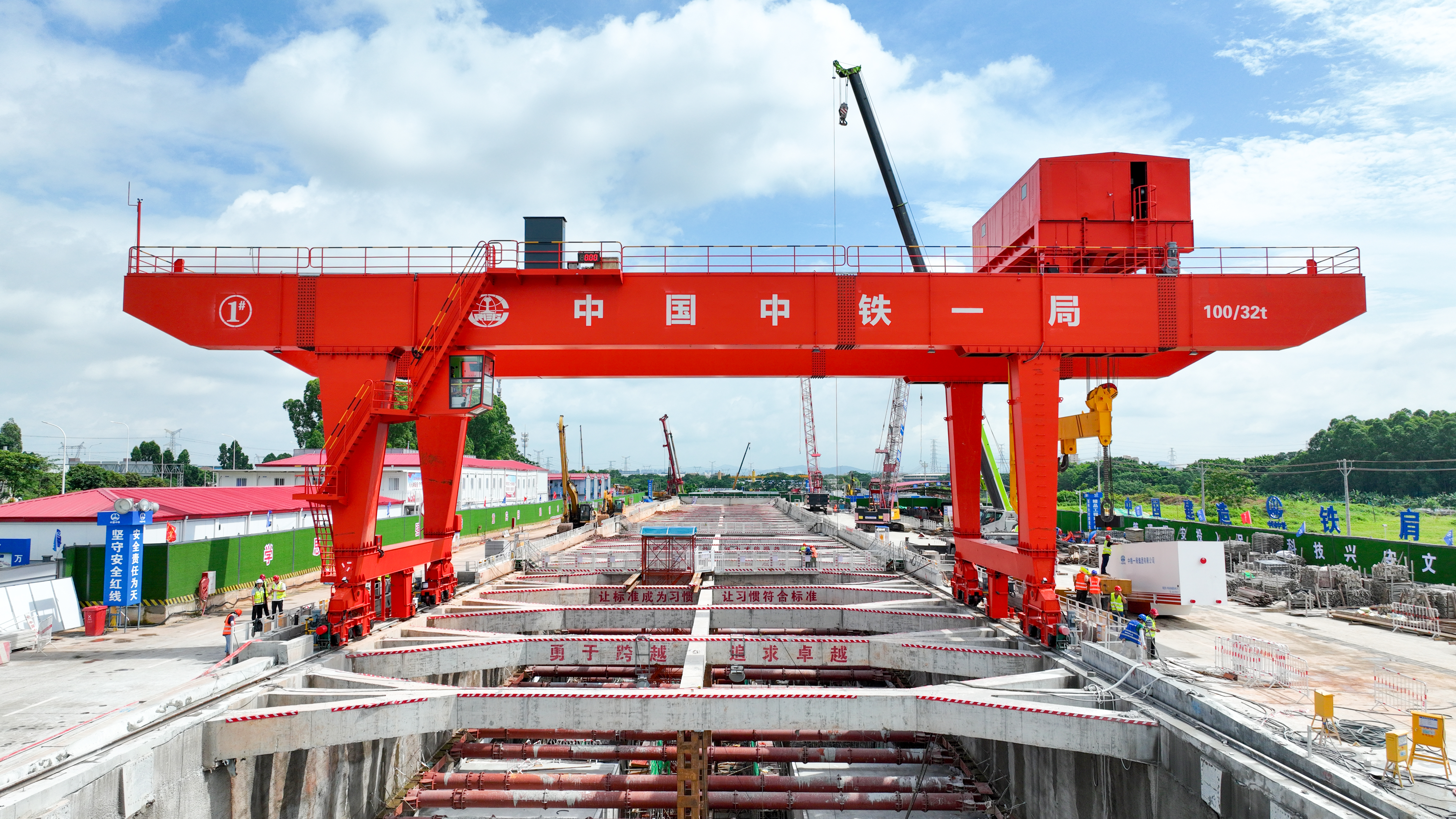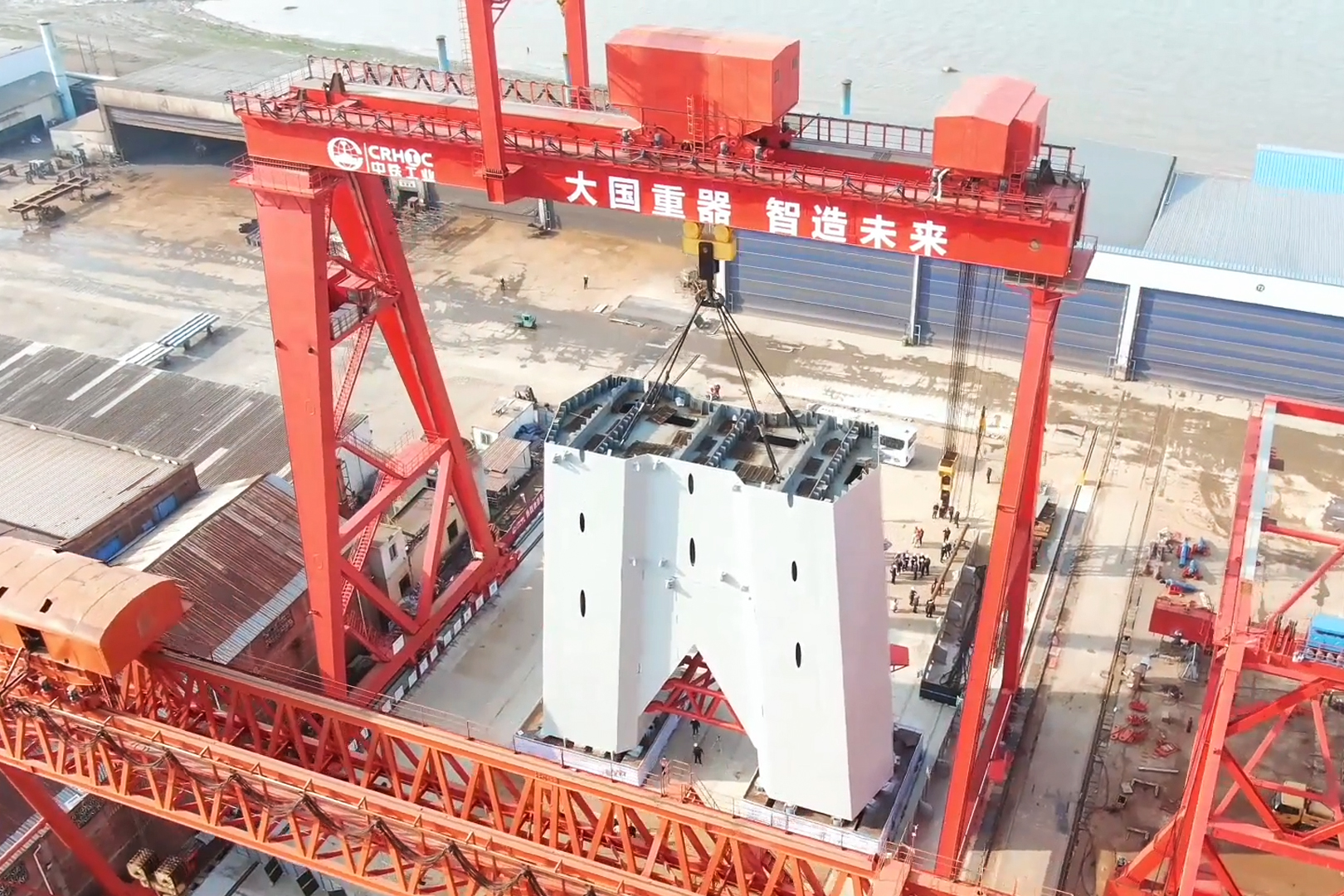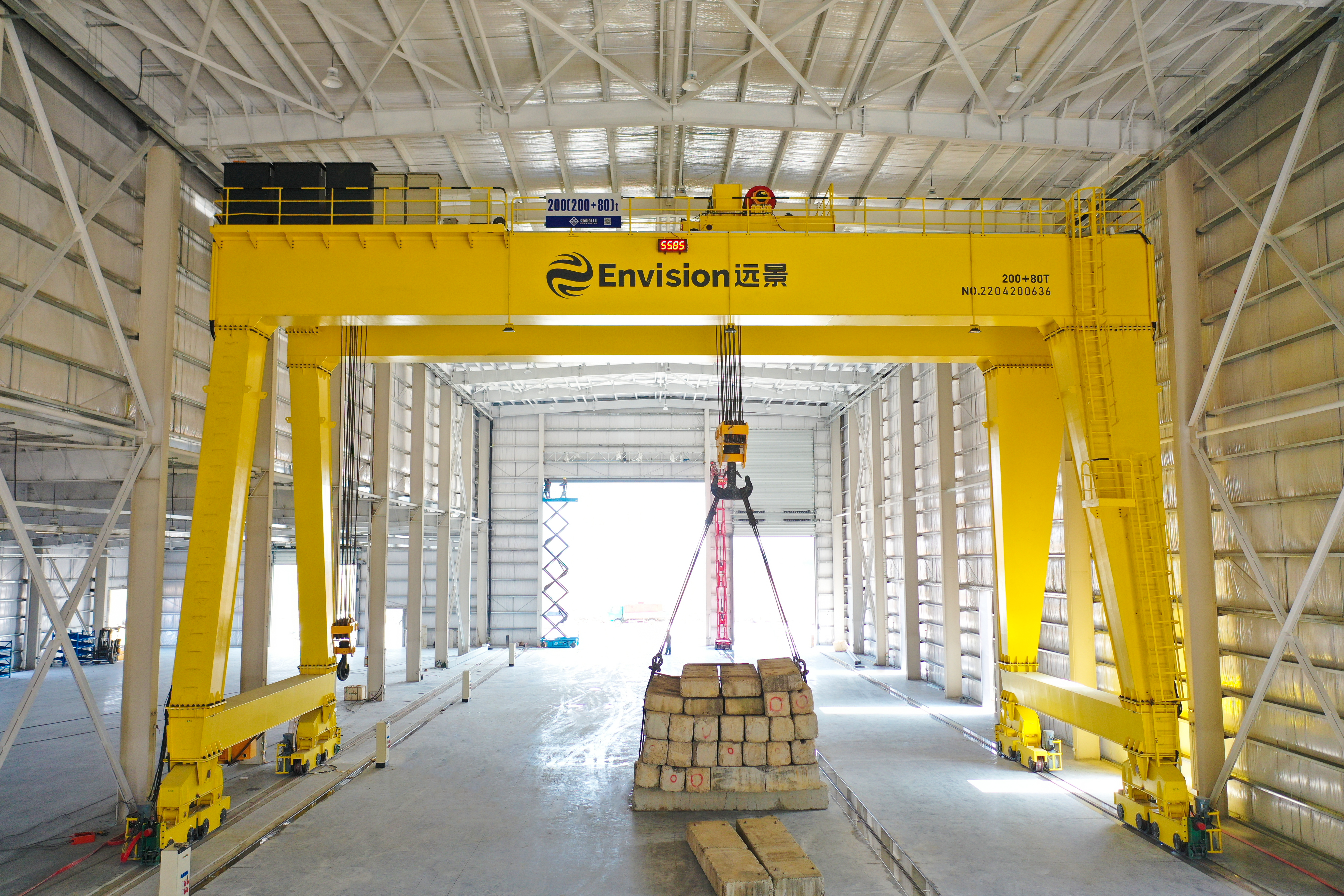Gantry Crane

What is a Gantry Crane?
A gantry crane is an overhead crane that has one or two beams supported by freestanding legs and moves on wheels, a track, or rail system carrying a bridge, trolley, and hoist. Workshops, warehouses, freight yards, railroads, and shipyards use gantry cranes as their lifting solution as a variation of overhead or bridge cranes.
Gantry cranes are versatile overhead lifting solutions designed to handle both small and heavy-duty loads. Their variety allows for customization to fit various lifting applications. The main advantage of gantry cranes is their ability to lift loads efficiently and safely, which enhances productivity and reduces time and costs.
Gantry cranes are categorized into single and double girder types. Single girder cranes are suited for smaller lifting applications, while double girder cranes are designed for high-capacity and more demanding tasks. Double girder designs, with their greater capacity and performance capabilities, tend to be more expensive.
Gantry cranes are categorized into single and double girder types. Single girder cranes are suited for smaller lifting applications, while double girder cranes are designed for high-capacity and more demanding tasks. Double girder designs, with their greater capacity and performance capabilities, tend to be more expensive.
While the common design features an “A” frame, gantry cranes are also available with L-shaped and U-shaped legs. Regardless of the girder type, all gantry cranes are engineered for heavy workloads and extended use, making them a preferred choice for heavy lifting tasks.
The lifting capacity of gantry cranes can range from a few hundred pounds to several hundred tons. They offer an efficient and cost-effective solution for lifting and moving equipment, materials, and tools of varying sizes and weights.
Gantry cranes are utilized in warehouses, shipping docks, and railroad yards. Outdoor models are equipped with weather protection features such as wind proofing, rain covers, and lightning protection. Additionally, gantry cranes can be designed with fixed or adjustable height and span to meet the specific requirements of different facilities.

What are the different types of gantry cranes?
Gantry cranes come in various styles with different load and lifting capacities, making them versatile for industrial applications. The key differences among gantry cranes are based on girder configuration, crane size, hoist trolley, and hoist type.
While many gantry cranes are designed as permanent, stationary lifting mechanisms, there are also portable and mobile versions. These mobile gantry cranes can be moved to the location of the items to be lifted. The wide range of gantry crane types allows them to be customized for specific conditions and lifting requirements.
What are the uses of gantry cranes?
Gantry cranes are versatile lifting devices equipped with a trolley and hoist, designed to handle heavy materials and loads. Their widespread use is attributed not only to their impressive lifting capacity but also to their diverse range of sizes, from compact models suitable for workshops to large-scale versions used in shipyards.
The adaptability of gantry cranes makes them an essential asset for both small and large industrial operations. They are often preferred over overhead cranes when the latter cannot meet specific operational requirements.
Uses for Gantry Cranes
Manufacturing
Gantry cranes play a crucial role in industrial manufacturing, where they are used to lift and transport materials, supplies, and products. They are particularly vital in the automotive, steel, and aerospace industries due to the specific requirements of their production processes. In the automotive and aerospace sectors, gantry cranes are often involved in the installation and positioning of engines.
Repair Shops
In small engine repair shops, the engines to be repaired have to be lifted and positioned so that the technician can view all parts of the engine. Large overhead cranes and simple winches are either impractical or insufficient to do the job. For this reason, repair shops depend on portable gantry cranes that have the load capacity to lift an engine and the mobility to reposition it.
Shipyards
Shipyards are the primary environments where large, heavy-duty cranes are extensively utilized. These cranes are essential for handling extremely heavy loads and ship components. From the massive engines powering the ships to the cargo they transport, everything in a shipyard is substantial. The flexibility and mobility of gantry cranes make them ideally suited for these tasks. Shipyard operations require various heavy-duty gantry cranes to manage shipbuilding, repairs, unloading, and material handling effectively.
Warehouses
The versatility of gantry cranes is a key factor in their widespread use in warehousing operations. Although overhead cranes might seem like a suitable choice for warehouses, many warehouse structures cannot support them. Instead, warehouses often utilize various types of gantry cranes tailored to the specific loads being handled. Typically, these cranes need to be mobile to efficiently transport heavy loads from unloading areas to loading zones.

Construction
In the construction industry, gantry cranes are highly valued for their mobility and load capacity. Construction projects often require equipment that can be quickly assembled and disassembled as crews move in and out of sites. Gantry cranes meet these needs effectively, as they can be set up for specific tasks and then dismantled once the job is complete. Their flexibility and ability to be repositioned make them an ideal choice for lifting operations on construction sites. Construction gantry cranes are typically used to lift heavy items such as concrete blocks, large steel support beams, and substantial quantities of lumber. These cranes are usually robust, heavy-duty designs with either single or double girders to handle the demanding lifting requirements of construction projects.
Shipping Containers
Shipping containers, which are the size of a semitrailer and exceptionally heavy, are a crucial component of the supply chain and are transported by planes, trains, and ships. Unlike older, smaller containers that could be handled by forklifts, these large, boxcar-sized containers are managed with mobile gantry cranes. These cranes efficiently lift and position the containers for placement on trucks or trains. The load capacity, mobility, and versatility of gantry cranes make them well-suited for handling shipping containers. Their ability to simplify and safely execute container movements significantly enhances the efficiency and safety of the loading process.
What are the different classifications of gantry cranes?
Classifying gantry cranes helps customers choose and install the most suitable crane for their specific needs. Proper classification ensures both safety and extended operational life of the crane. Overloading or misusing a crane beyond its classification can lead to dangerous conditions, inefficiency, and unnecessary costs.
Various standards exist for classifying and evaluating cranes based on their performance. The Crane Manufacturers Association of America (CMAA) provides classifications based on factors such as load intensity and the number of lift cycles, including the weight to be lifted, the lifting method, and the frequency of lifting operations.
Gantry Crane Classifications
A - Standby or Infrequent Service
Class A cranes operate at slow speeds with extended periods of inactivity between lifts. These cranes are used in applications such as public utilities, motor rooms, and transformer stations, where precise equipment handling is required.
B - Light Service
Class B cranes handle varying duty cycles and loads, from no load to occasional full loads, performing two to five lifts per hour with an average lift height of ten feet. These cranes are commonly found in assembly operations, repair shops, service buildings, and warehouses that handle light loads at slow speeds.
C - Moderate Service
Class C cranes manage loads that average about fifty percent of their capacity, performing five to ten lifts per hour with a lifting height of fifteen feet. Most cranes are rated as Class C, serving manufacturing facilities and machine shops.
D - Heavy Service
Class D cranes are used continuously with heavy workloads, making ten to twenty lifts per hour at heights of fifteen feet. They operate quickly and are found in environments with heavy equipment and materials, such as foundries, fabrication industries, steel storage, train and shipyards, and lumber mills. They operate at about 65 percent of their full capacity.
E - Severe Service
Class E cranes frequently lift their full rated load, averaging twenty or more lifts per hour with minimal restrictions on lifting height. They operate at high speeds with motor stops up to 600 per hour and a bearing life of 20,000 hours. The Occupational Health and Safety Administration (OSHA) mandates that Class E cranes undergo regular inspections, which may be daily, monthly, or quarterly, with specific guidelines for these inspections.
F - Continuous Severe Service
Class F cranes represent the most robust gantry cranes, designed to handle full capacity loads continuously under the most demanding conditions. Although similar to Class E, Class F cranes are distinguished by their need for constant operation. Typically, Class F cranes are custom-designed to meet specific application or facility needs, optimizing performance. These cranes must adhere to rigorous frequency, use, and load specifications, making their design and fabrication complex.
Use Cycle
The use cycle of a gantry crane begins with its initial lift preparation. The crane’s level of utilization influences its use cycle and classification. Factors affecting the service life of the crane include economic, technical, and environmental considerations, each impacting the crane’s longevity.
Conclusion
1.A gantry crane is an overhead crane that has an overhead beam supported by freestanding legs and moves on wheels, a track, or rail system carrying a bridge, trolley, and hoist.
2.The lifting capacity of gantry cranes ranges from a few hundred pounds up to several hundred tons.
3.Gantry cranes are designed in different styles with different load and lifting capacities. The range of shapes and sizes of gantry cranes makes them adaptable for any type of industrial use.
4.Whether a gantry crane is small and mobile or huge and used in a shipyard, its components are divided into three categories: mechanical, structural, and electrical.
5.The classification of gantry cranes is to assist customers in the selection and installation of the right crane for an application.

